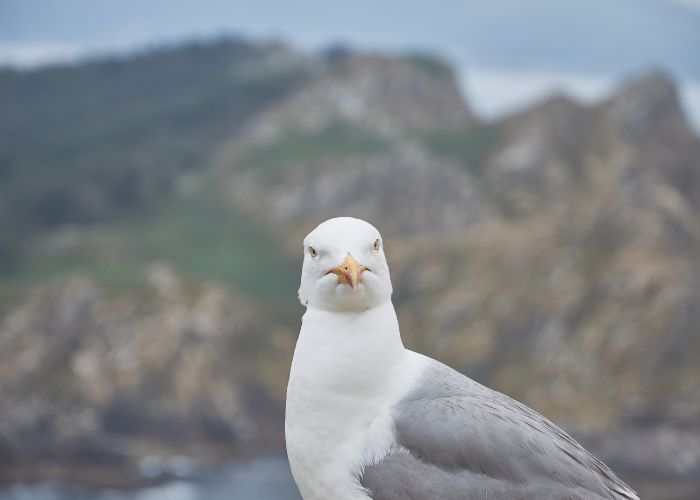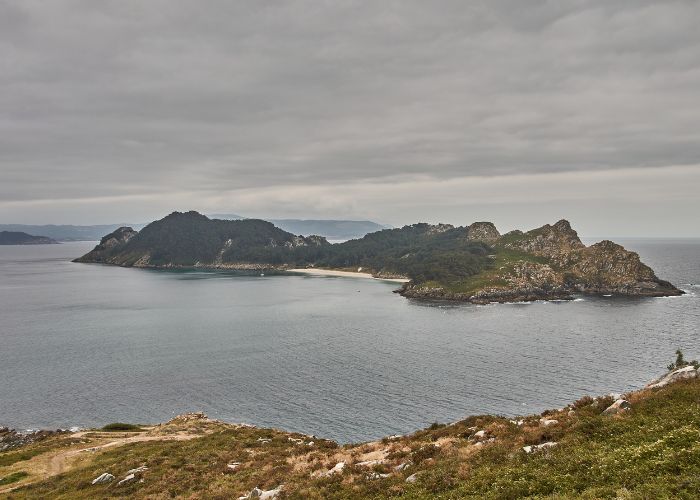GALICIA – Nestled in the Atlantic Ocean just off the coast of Galicia, lies a hidden paradise that few outside of Spain have heard of. The Cíes Islands are a true gem, offering visitors a unique experience of Spanish culture, cuisine, and nature, all while enjoying some of the most breathtaking beaches in Europe.
The Cíes Islands consist of three islands – Monteagudo, Faro, and San Martiño – and are part of the Atlantic Islands of Galicia National Park. The islands are home to an abundance of flora and fauna, making them an ideal destination for nature lovers. The crystal-clear waters surrounding the islands are teeming with marine life.
History and culture
The oldest remains reported on the islands date back to 3500 BC. However, settlements have also been found from the Bronze and Iron ages. Next came the Romans who called the islands “The Islands of the Gods”. The Roman Empire used the islands as a base for fishing and trade.
Then, in the middle ages, it was the turn of the monks who populated the island and built two Monasteries. One can be found on the Faro Island (San Estevo – Saint Stephen. The other is on the San Martiño island after which it is named (San Martiño – Saint Martin). The monks also built a salting factory, which today is the site of one of the restaurants.
In the mid 1800s, the first lighthouse was built. This was the Cíes Lighthouse which at 180 metres above sea level, is the most famous even today.
However, by 18th century, due to the frequency of attacks from pirates, the islands largely became unihabited. Then, from the 1970s, the islands once again became popular. But this time mainly for tourists to relax on the beaches and appreciate the flora and fauna. The only pirates to be found today perhaps, are the seagulls!

Today, the islands remain largely untouched.
The Cíes Islands
Monteagudo Island
Monteagudo is the smallest of the three islands, but it is also the highest, with an elevation of 197 metres. The island is known for its stunning views of the surrounding ocean and for being a popular spot for bird watching. Monteagudo is home to the Monte Faro lighthouse, which was built in the 19th century and is still in operation today. Visitors can hike to the top of the island to reach the lighthouse and take in the panoramic views of the ocean and the other islands.
Faro Island
Faro Island is the northernmost of the three islands and is home to the Playa de Rodas, which is often ranked as one of the most beautiful beaches in the world. The beach boasts white sand and turquoise waters, and is surrounded by lush vegetation. Visitors can swim, sunbathe, and even rent kayaks to explore the nearby cliffs and caves.
Faro Island is also home to a small campsite with restaurant, making it a popular destination for those looking to spend a night under the stars. Once your accommodation is confirmed, you need only book your boat transfer.
Monteagudo and Faro islands are linked by a sandy area at Playa de Rodas and a breakwater.
San Martiño Island
San Martiño Island is the southernmost of the three islands and is known for its rugged cliffs and secluded beaches. The island is popular with hikers and nature lovers, as it offers some of the most stunning views in the region. Visitors can hike to the top of the island to take in the panoramic views of the surrounding ocean, or explore the rocky coves and hidden beaches that dot the coastline. San Martiño Island is also home to an abandoned whaling station, which provides a glimpse into the region’s maritime history.

Visitors must be authorised
As there is a limit on the number of visitors permitted on the islands, it is necessary to plan your visit. Before you can book your boat tickets, you must first apply for authorisation from the Junta de Galicia. However, it is important to note that once you have requested the authorisation, you have a very short window of a couple of hours to book your tickets, otherwise the permit will be cancelled.
However, if you do book with the campsite on Faro island, it is not necessary to apply for the authorisation to visit the islands as the campsite will do this for you.
The islands are located at the entrance to estuary of the city of Vigo. Therefore, this is an excellent city to use as your base as you can take the boat from here.
Also read: Vigo ranks one of the cleanest cities in Spain
Outdoor activities
For nature lovers, the islands offer a wealth of outdoor activities, including hiking, bird watching, kyaking, diving, and snorkelling. The islands´ rugged coastlines are home to a wide range of marine life, including dolphins, whales, and seals. Furthermore, visitors can take a boat tour to explore the area and spot these magnificent creatures in their natural habitat.
Hiking
There are various walking routes on the islands which are suitable for different levels of ability. They can take anything from 1 hour to 3 hours. If you do plan to hike, remember to wear suitable shoes, and bring plenty of water and sun lotion.
Water activites
There are plenty of organisations you can arrange activites on the water with. Most hotels can recommend options to suit, and can be booked in advance.
The beaches
Of course, one of the main attractions of the Cíes Islands is the beaches. The islands are home to some of the most beautiful beaches in Europe, with white sand and crystal clear waters. The most famous is Playa de Rodas.
Rodas Beach
More than half a mile long, and right next to the Rodas Pier, it has fine, white sand and crystal clear, emerald waters. Next to it you will also find natural dune areas.
Also read: Rodas beach one of Spain´s 627 blue flag beaches
Praia da Figueiras
To the right of the Rodas Pier, this nudist beach is a short walk along a small path. It is quiet and very beautiful. Furthermore, it is popular with German tourists.
Muxieiro Beach
Also found next to the Rodas Pier, this beach has a small chapel dedicated to the Virgin del Carmen.
Praia de Os Viños
Also known as Bollos Beach, this secluded beach on the northern side of the island is only accessible by boat or on foot. Surrounded by rugged cliffs, it offers a peaceful and serene setting for those looking to get away from the crowd. A boat from the harbour station takes you to Rodas Pier, then simply walk until the end of Rodas Beach. It is accessed via a path that passes next to the island´s old cemetery.
San Martiño Beach
As the island of San Martiño is not connected to the other two, this beach can only be accessed with permission, and by private boat.
Cuisine
This part of Spain is also known for its excellent seafood. And the Cíes Islands are no exception. Although small, they offer several restaurants serving up fresh, locally-caught fish and shellfish. Visitors can sample a variety of traditional Galician dishes, including octopus, razor clams, and seafood stew, all prepared with the freshest ingredients and a commitment to local culinary traditions.
These restaurants and bars are located near the port on Faro Island and are open during the peak season. Visitors can enjoy seafood paella, octopus, empanadas, and other local specialties while taking in the stunning views of the ocean. The campsite also has a very popular restaurant that is open to non-residents.
Getting to the Cíes Islands
Getting to the islands is relatively easy, but visitors should plan ahead. The islands are only accessible by boat from the nearby cities of Vigo, Baiona, and Cangas. Visitors must also book their tickets in advance, as the number of visitors to the islands is limited to protect the natural environment. Outwith the summer season, access to the islands is weather dependent, and as demand is less, the ferry options are fewer and far between. However, this also means less visitors, and therefore, very quiet beaches. Perfect for those who just want to chill in nature.
By ferry
There are several ferry services that operate on the Galician mainland from the above mentioned cities . The journey takes approximately 30 minutes and offers stunning views of the surrounding coastline.
By private boat
Visitors with their own boats or private yacht charter can also easily reach the Cíes Islands, with several mooring points available on the island.
Staying on the Cíes Islands
The Cíes Islands are mainly visited as a day trip, but visitors can also stay overnight in the camping area located on Faro Island. The camping area is the only place to stay overnight on the islands and is open from April to September. Visitors must book in advance, as the camping area has limited capacity due to the protection of the natural environment.

To help keep the islands clean, it is important to remember to be respectful of the environment. Therefore, bring a bag and take any rubbish away with you when you leave. By doing this, it helps the Cíes Islands to remain a little piece of paradise.


